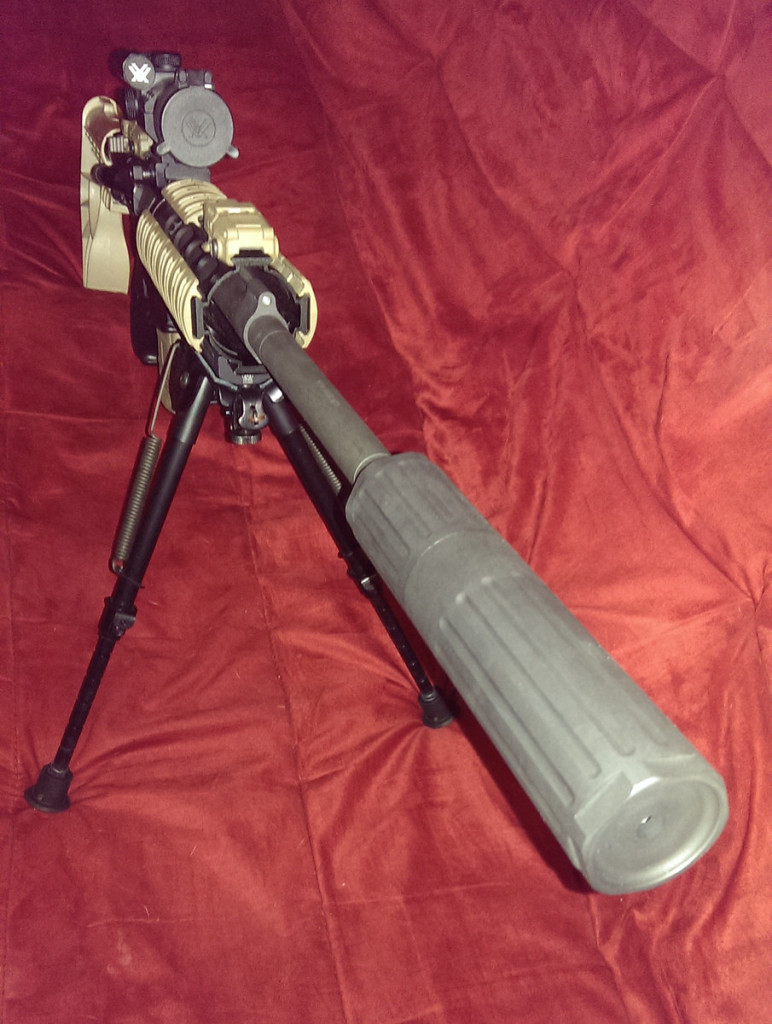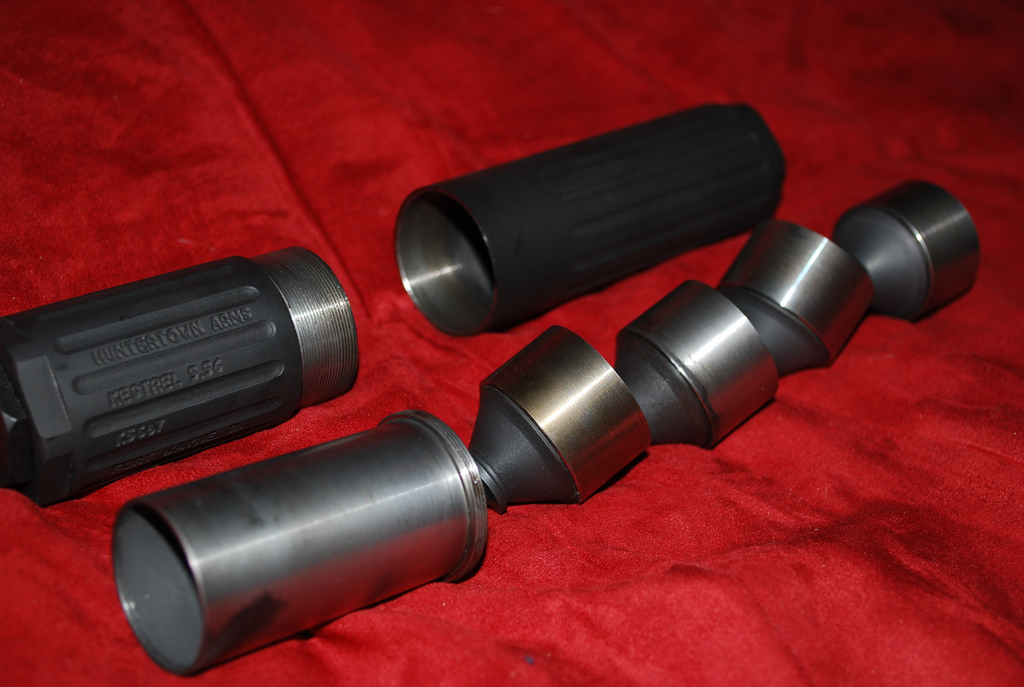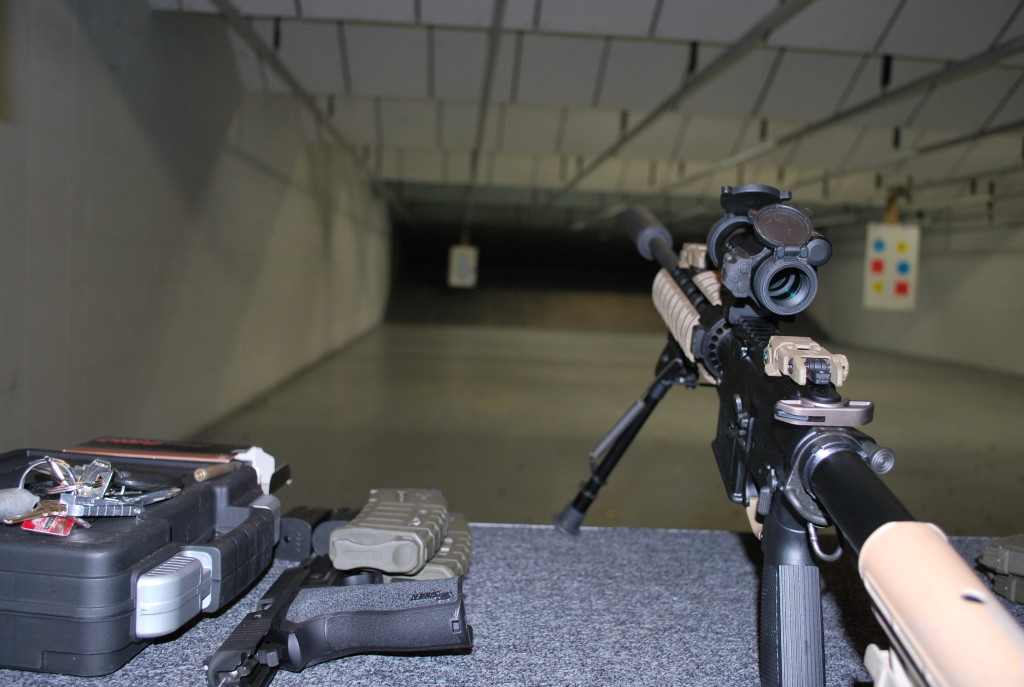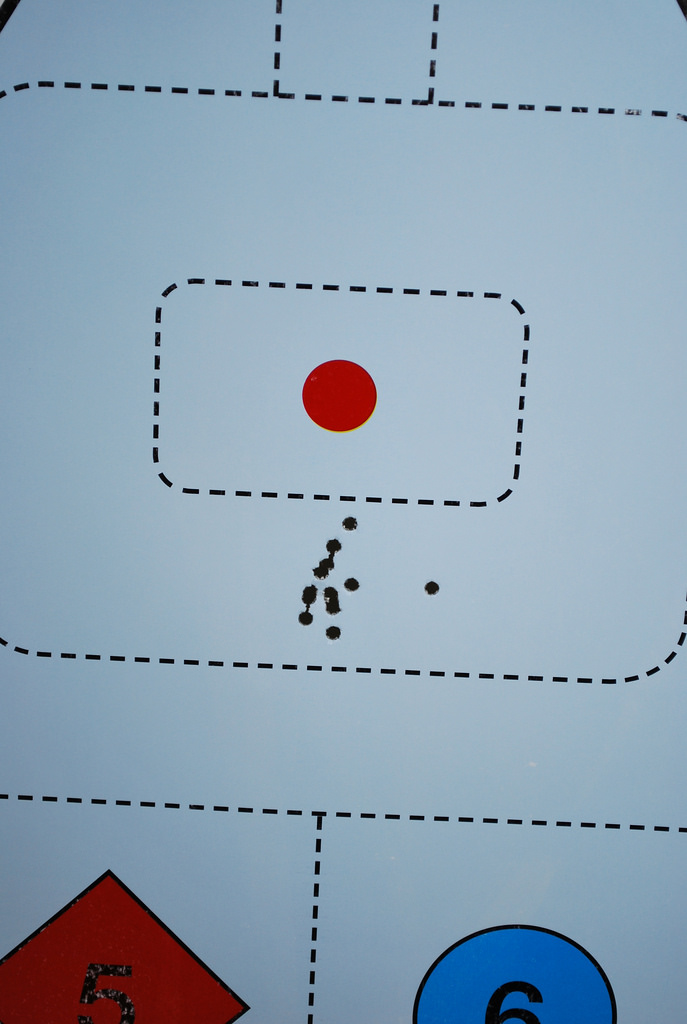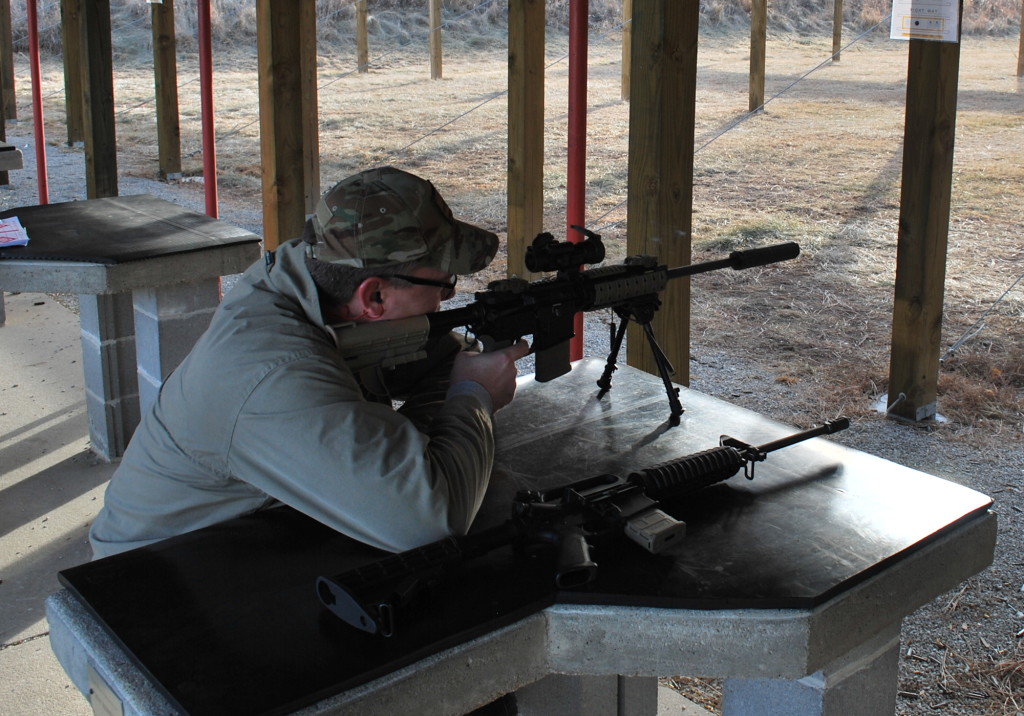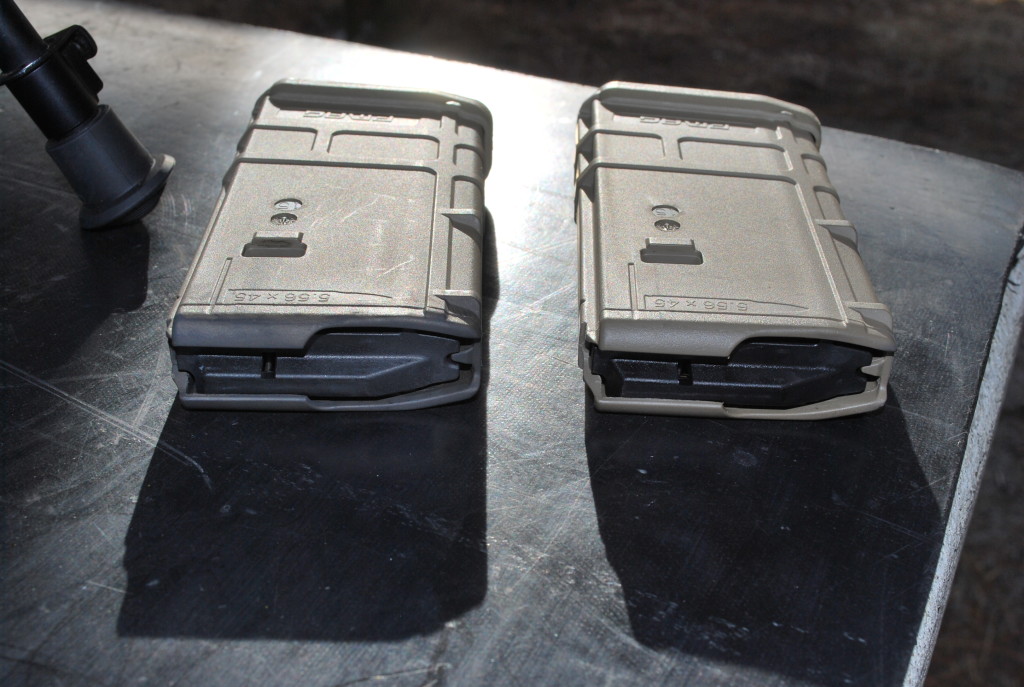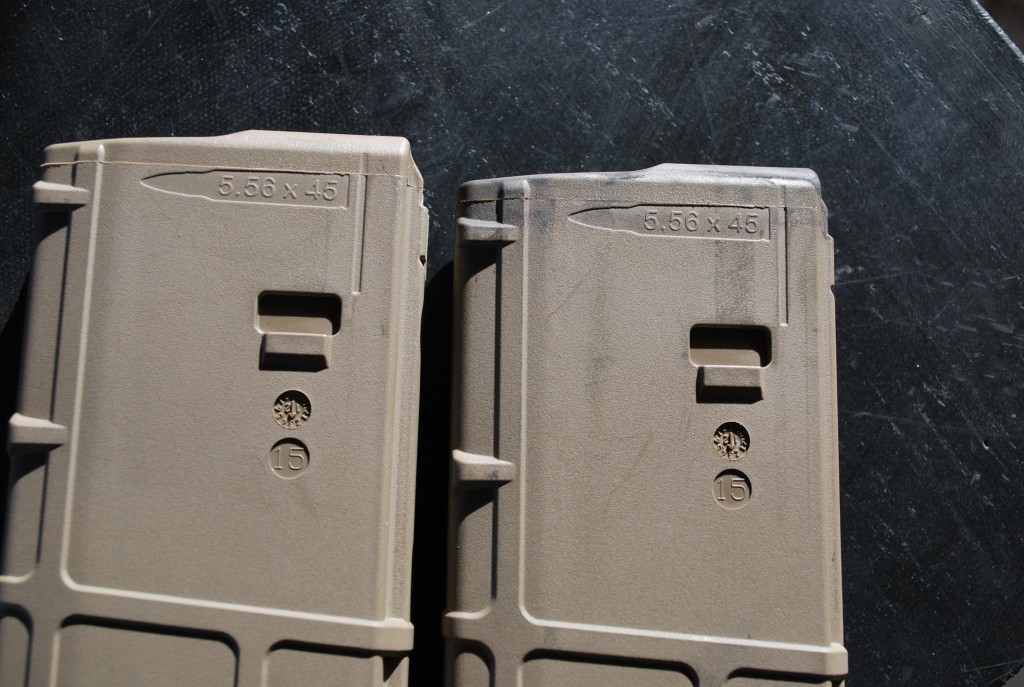Review: Huntertown Arms Kestrel 5.56
When I finally decided to get a silencer in December 2012, I was not sure that I would be getting more than one. I was nervous about spending a lot of money, especially when the cost of every new silencer includes a mandatory two hundred dollar donation to the federal government. It seemed to me that getting a can that could serve in multiple roles would be a good way to get started.
Specifically, I liked the idea of having a centerfire can that I could also use when shooting rimfire .22 through my AR using my CMMG .22LR AR conversion. In the tough ammo market following the Sandy Hook tragedy, shooting the cheaper rimfire through my AR seemed to make a lot of sense. I had read about how quickly rimfire can gunk up a can, so I decided that I wanted a user serviceable model. At the uber inexpensive end of the market, the Huntertown Arms Kestrel 5.56 seemed like just what I was looking for, with an MSRP of $499. I got mine just after New Year’s 2013 via gunbroker.com for $429 (not including the $200 transfer tax or the $75 local dealer NFA transfer fee).
The Form 3 transfer from the out-of-state seller to my local dealer took about two months, and my paper Form 4 was submitted to ATF in early March. A mere ten months later, my approved transfer application arrived with $200 stamp affixed.
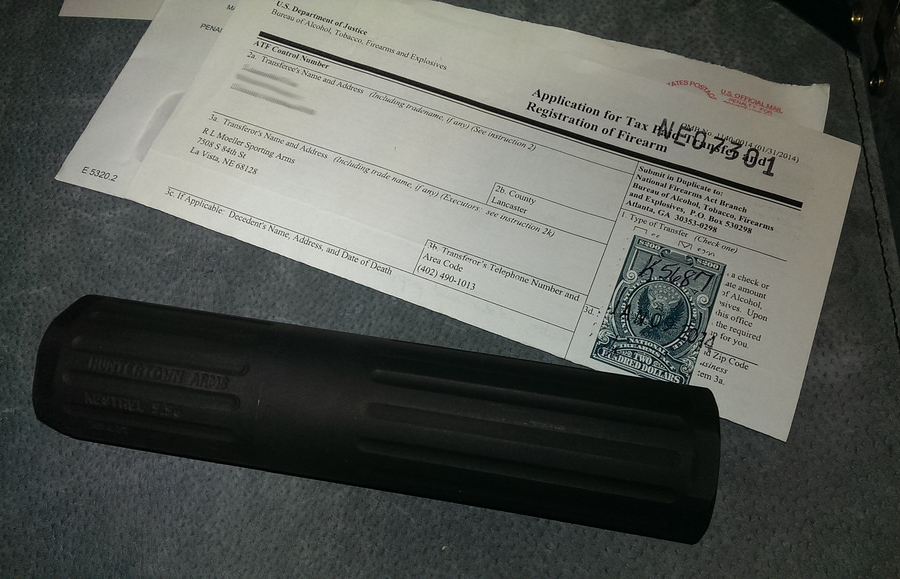
Even though it took ten months to spring the Kestrel from the dealer’s safe for good, I did have some visitation in the meantime. Rod Moeller, the SOT dealer handling my transfer, was generous enough to bring the can out for some range time at the Nebraska Firearm Owners Association annual members meeting. That session only amounted to a rushed magazine of centerfire followed by a rushed magazine of rimfire, and then I had to get back home. After that little taste, I was eager to finally take possession and put some more suppressed rounds downrange.
When the approved Form 4 arrived from ATF, I completed a Form 4473 with Rod and took everything home. The first thing I noticed was that this thing is heavy. Buying an inexpensive centerfire can means buying steel, and steel is not light: 19.5 ounces, in the case of the stainless steel Kestrel 5.56.
The can disassembles easily enough, breaking down into blast chamber, baffles, and two outer tube sections. The mounting assembly can also be removed in order to adapt the can to different thread types. The baffles are machined to fit into each other snugly, but they come apart easily for cleaning. The manufacturer suggests dropping them into a reloading tumbler to clean them.
When I took the Kestrel to the range after picking it up from the dealer, the weather here in Nebraska was cold and windy. For that first range outing I went to an indoor venue here in Lincoln, something that limited me to a 25-yard maximum range. Shooting centerfire rifle indoors is usually a pretty jarring experience for the shooter and bystanders alike, but the Kestrel did a good job of taming the muzzle blast of my sixteen-inch AR-15 shooting .223 Remington. When I swapped out the centerfire bolt for the CMMG .22LR conversion bolt, the rifle sounded like something out of a video game.
It effectively muffled the blast of my rifle, and the can didn’t seem to affect my point of impact, with my 100-yard zero resulting in a 25-yard group right where you would expect it.
The following weekend, I went out to the local Izaak Walton League range to get some trigger time at a hundred yards, and in an outdoor environment where I could get a better perspective on the effectiveness of the Kestrel’s suppression. Shooting side by side with an unsuppressed rifle, the rifle fitted with the Kestrel was impressively tame.
Here is a video demonstrating the difference between the suppressed and unsuppressed rifles.
Shooting suppressed means extra cleaning. Look at the difference in fouling on these identical, brand new 20-round PMAGs after just twenty rounds each.
Conclusion: The Kestrel 5.56 from Huntertown Arms is a bargain-priced silencer that is solidly constructed, versatile, and effective at suppressing centerfire and rimfire muzzle noise. The all-steel construction makes this a heavy ornament to hang from your barrel, but it is hardly noticeable when shooting from the bench. The silencer does not seem to impair the accuracy of the host gun. Disassembly for cleaning is easy, and requires no special tools, making rimfire shooting through this can a guilt-free exercise.
If you are looking for an entry-level silencer for bench-shooting, varminting, or other stationary shooting applications, the Huntertown Kestrel 5.56 might be a good choice for you.

